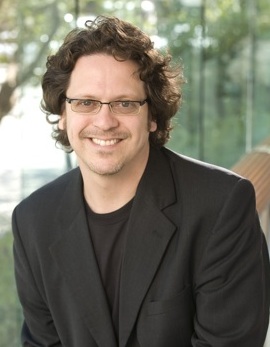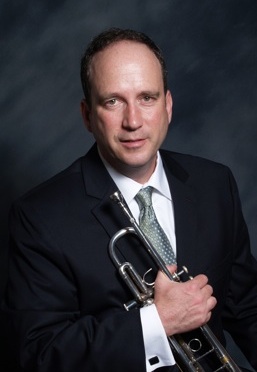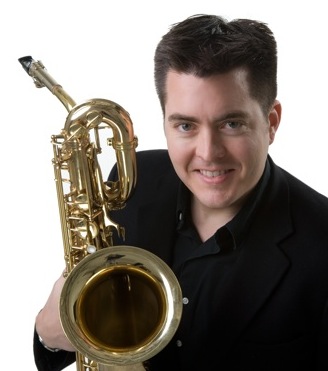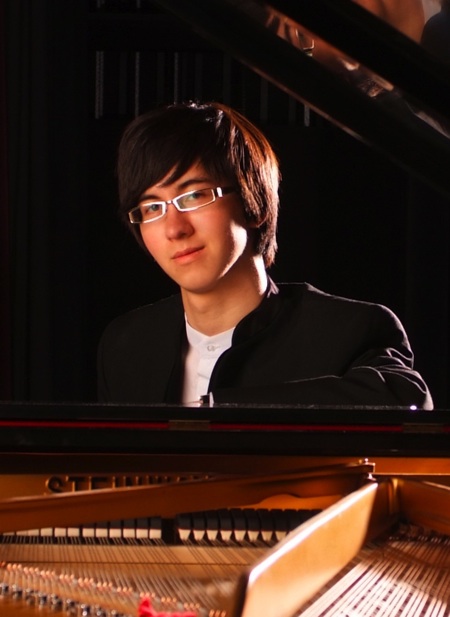The dawn of jazz
 The California Symphony pulled off a one-of-a-kind event last Sunday, Jan. 24, in Walnut Creek’s Lesher Center for the Arts. Led by an enthusiastic Donato Cabrera, an unusual group of musicians came together to explore how jazz informed classical music in a program titled “American Roots.”
The California Symphony pulled off a one-of-a-kind event last Sunday, Jan. 24, in Walnut Creek’s Lesher Center for the Arts. Led by an enthusiastic Donato Cabrera, an unusual group of musicians came together to explore how jazz informed classical music in a program titled “American Roots.”
Those musicians were a shifting alliance of brass, sax, winds and a smattering of strings, turning a classical corps into something closer to Big Band. “Jazz had an incredible impact on the US and then spread across the world,” said Cabrera before conducting Darius Milhaud’s La création du monde. “Put yourself in that world, in Paris in the 1920s.”
Exposed to Harlem in 1922, Milhaud wrote this work a year later as a ballet inspired by African creation myths. Impressionist French chords and drifting rhythms soon turned to jazzy swagger in “The Chaos before Creation” and then gentled into a slow duet of flute and cello. There were primeval twitters and the groans of a world being born, a sense of formlessness and Mystery, and then an up-beat celebration of the creation of Man and Woman.

And while we were being treated to this early experimental fusion, we were also being treated to far more individual expression and freedom than one usually finds in a classical orchestra. These performers rose to the occasion with artistry and grit. Clarinetist Mark Brandenburg wowed us in this piece and again in the next, Leonard Bernstein’s Prelude, Fugue and Riffs, with a sound that was easy, expressive and intelligent. David Henderson and Aaron Lington were by turns soulful and swaggering and then joined a brilliant ensemble sound with three more sax players.
And trumpets Scott Macomber and William Harvey articulated a wide language that not only strutted but ranged from swampy to sly, along with three more excellent trumpets. And those trombones!
“We now go to thirties Weimar Germany, and jazz was there and it was unique,” introduced Cabrera. The musical suite from Kurt Weill’s Three Penny Opera engaged us in post World War I trauma, lonely horns and martial snare drums, a languidly sexual sound for a depressed economy. This was music that clearly outlines the tragedy, hope and fears of that generation, paving the way to the next world war. Donald Benham recreated “Mack the Knife” on muted trombone with soft trumpet arpeggios as back rhythms, a sound that caused shivers.
After that painful beauty, these musicians blew us out of the water in a joyous explosion. Piano sensation Charlie Albright tackled Rhapsody in Blue with spitfire technique and a sure finger on the pulse of George Gershwin’s genius.
 “This is not the background music you would hear on a plane. This is the original version heard in 1924 in Aeolian Hall in New York City,” Cabrera informed us. It was the same jazz-band instrumentation that Gershwin used in his premiere with Paul Whiteman’s band, a premiere so fresh that Gershwin hadn’t had time to write out his own piano part.
“This is not the background music you would hear on a plane. This is the original version heard in 1924 in Aeolian Hall in New York City,” Cabrera informed us. It was the same jazz-band instrumentation that Gershwin used in his premiere with Paul Whiteman’s band, a premiere so fresh that Gershwin hadn’t had time to write out his own piano part.
Five trumpets, five saxes (running the gamut from soprano to baritone), three trombones and a tuba, two French horns, two violins and a stand-up bass (and Andy Butler held his own with massive dollops in the midst of the ensemble), percussion, oboe, two clarinets and a banjo were arrayed against the piano, and sometimes drowned it out in a joyous roar. These regular Symphony members double as lovers of jazz, and this was their moment.
Clarinetist Mark Brandenburg opened with a long rise up and heart-stopping wail, then dropped down to develop the theme with slow trills and witty pauses. This was a magical moment that has come to symbolize the coming of age of Jazz, and of a truly American form of music on the world stage. The themes moved into silvery muted trumpet and then the full fat of the orchestra before introducing the pianist, Albright, a prodigy whose ease with technical virtuosity was equaled by his deep and mature immersion in this wild ride.
Moods were quicksilver, from quietly intimate to passionate outbursts, electric cadenzas, and ending with a lush romanticism that may have been borrowed from Brahms or could then have inspired Rachmaninov.
The entire audience stood and applauded until Albright returned for an encore of pianistic wildfire, and then for a second encore – Great Balls of Fire. Embracing a program of American idioms, Albright dispatched this with even more fire, and with glissandos that zippered up and down the keyboard.
While parts of this program were less successful (Stravinsky’s Scherzo á la Russe was unconvincing) this was a faithful reproduction of the experimental music of that era. And then the high points were extraordinary.
The California Symphony returns to more usual classical fare on March 20, when they perform the Overture to Mozart’s Marriage of Figaro and Beethoven’s Symphony No. 7 – one of Beethoven’s own favorites. See Californiasymphony.org for information.
—Adam Broner
Photo top of conductor Donato Cabrera; left, trumpet player Bill Harvey, right, of sax player Aaron Lington, and below, pianist Charlie Albright, photo by Stan Giske.
